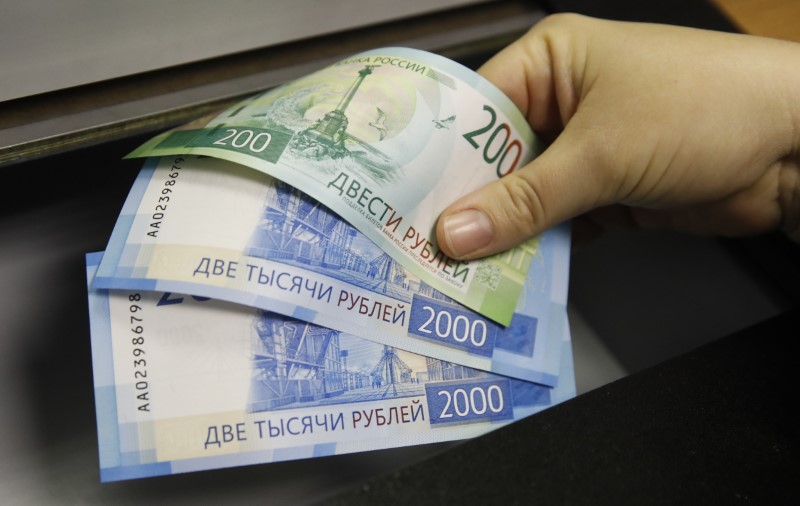By Saikat Chatterjee and Sujata Rao
LONDON (Reuters) - Russia's rouble has endured its worst week in more than 2-1/2 years but foreign exchange derivatives predict more pain ahead as bond and equity investors continue slashing exposure to the market after tough new sanctions from the United States.
While a market bounce in the past two days has helped the rouble nearly halve its weekly losses since Wednesday, option market indicators such as implied volatility and risk reversals on the Russian currency remain at extremely elevated levels.
One-month implied volatility, a gauge of expected swings in a currency - surged this week to over 20
(GRAPHIC: Rouble Vol jumps https://reut.rs/2qtwIgt)
More significant for the near-term outlook is the inversion in the implied volatility curve, with one-month options trading well above longer-dated ones, something which has happened in the rouble curve fewer than 10 times in the past decade.
Such has been the jump in front-end that the spread between one-year and one-month vol has inverted to its biggest level in nearly three years.
"What the rouble vol surge indicates is that the market can no longer price a stable path for the rouble being in a range and that will continue," Unicredit (MI:CRDI) strategist Kiran Kowshik said who recommends buying a covered call on the dollar against the rouble over a one-month period.
Demand for bets favoring the dollar against the rouble have also mushroomed.
One-month risk reversals, which measure the relative demand for options on a currency rising or falling against the dollar, show a growing bias for further weakness in the rouble
(GRAPHIC: Rouble risk reversals and spot https://reut.rs/2IN3vEP)
The distress stems from Russia's popularity with foreign investors thanks to its low external funding reliance, high bond yields and rising oil prices -- over 70 percent of emerging debt funds were "overweight" rouble debt, Morgan Stanley (NYSE:MS) estimates.
Russia was also the No. 1 holding in emerging equity portfolios, according to Copley Fund Research.
As a result net speculative long rouble positions were above 60 percent of total positions prior to the selloff, data from Commodity Futures Trading Commission (CFTC) showed.
"I don’t think anyone was expecting a 10 percent move. Everyone was so long on Russia, and there was a lot of unwinding. I think the market is still long, so there is some more pain to come," said Nikolaos Sgouropoulos, a currency strategist at Barclays (LON:BARC).
(GRAPHIC: Rouble Positions https://reut.rs/2IRlXMA)
But when sanctions hit, investors who were caught off-guard and unable to immediately liquidate stock and bond positions turned to currency markets to limit investment losses, either by hedging the currency or selling outright.

"The rouble has been hit the most as the most liquid asset class: fixed income investors, for example, tend to hedge negative news by selling the currency as it could take time to liquidate local bond holdings," said Gabriele Foa, a market strategist at Bank of America Merrill Lynch (NYSE:BAC) in London.